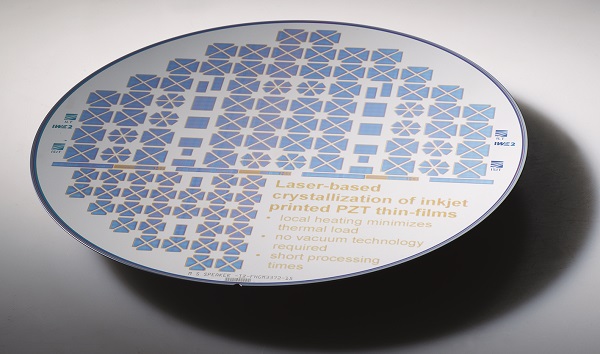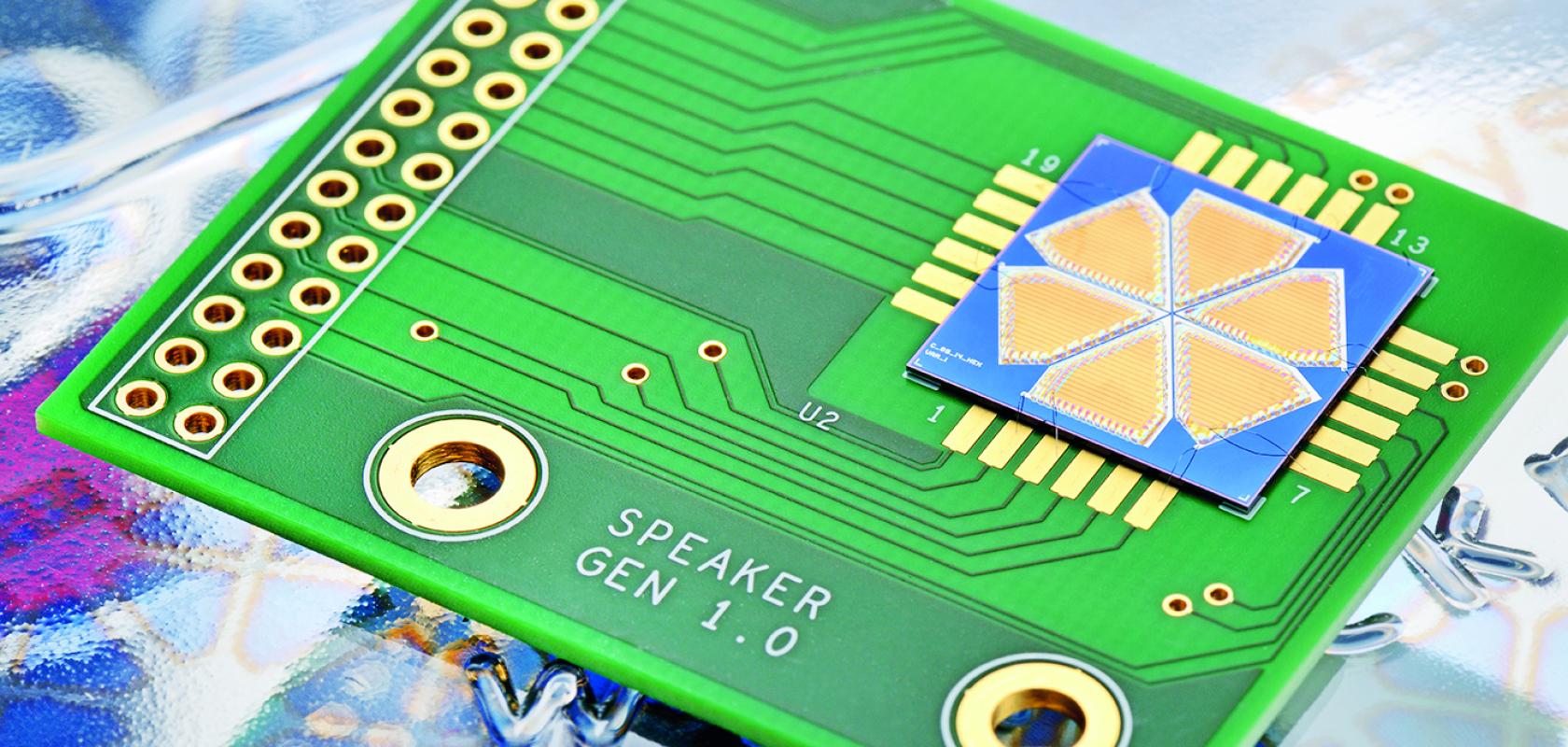Researchers are able to print miniature loudspeakers efficiently and cost-effectively as part of piezoelectric microelectromechanical systems (piezo-MEMS), using a combination of inkjet printing and laser crystallisation.
The process could be used as a faster and more affordable alternative to vacuum- and mask-based piezo-MEMS manufacturing methods.
Piezo-MEMS are used in communications or medical technology as miniature sensors or actuators in pumps, valves or loudspeakers.
They comprise piezoelectric layers of a few microns in thickness that fulfill the actuator or sensor functions – either they expand when an electric field is applied or they convert mechanical motion into electrical voltage.
The thin films are usually made of lead zirconate titanate (PZT), currently the most powerful and functional piezoelectric ceramic.
The partners of the recently completed GENERATOR project (Generative Manufacturing of Efficient Piezo-MEMS for Microactuators), including Fraunhofer ILT, Fraunhofer ISIT and RWTH Aachen University, are now able to use a combination of digital inkjet printing and laser crystallisation to manufacture piezo-MEMS.
Their method works by using a laser to induce crystallisation following the application of special PZT ink to 8-inch silicon wafers, at temperatures of over 700°C. With it the researchers can build a multilayer actuator out of several 20 to 30nm thin PZT layers.
By building up to 30 layers of functional ceramics and electrodes on top of each other, the researchers were able to produce a micro loudspeaker about the size of a 1-cent piece.
Faster and more affordable
The fast laser processing of the layers reduces the processing time of each layer from minutes down to just a few seconds. In addition, instead of using platinum as the electrode material, which can be very expensive, the scientists use electrically conductive ceramic lanthanum nickel oxide (LNO). By dispensing with metallic components, they have significantly increased the durability of the purely ceramic multi-material stacks while reducing material costs at the same time.
Conventional systems for manufacturing thin-film electronics cost several million euros and only make financial sense for large-scale production. For smaller batch sizes, the researchers’ additive hybrid process becomes attractive, especially if the component consists of several layers like the micro loudspeaker.

Technical structures and any geometries can be applied to the wafer by means of inkjet printing, and functionalisation takes place via laser radiation. The individual loudspeaker elements are then separated and integrated into an electronic environment. (Image: Fraunhofer ILT)
‘The beauty of this manufacturing method is the digitally controllable printing and laser processes, which allow instantaneous design changes of the manufactured layers without additional costs for masks or tools and thus also the production of smaller batch sizes,’ said Dr Christian Vedder, head of the Thin Film Processing group at Fraunhofer ILT.
The process is, therefore, particularly suitable for small and medium-sized enterprises (SMEs).
‘The user needs appropriate printing and laser system technology as well as specially adapted PZT and LNO inks,’ added Fraunhofer ILT scientist Samuel Fink. ‘Even very small job stores could, therefore, set up small-scale production for microactuators in the future.’
Future thinking
Until now, the researchers' process has been used to coat silicon substrates. These substrates have had to undergo relatively complex post-processing after the multi-stack system has been built in order to produce components that are ready for use.
However, the properties of the laser-based manufacturing process mean that other substrates such as ultra-thin glass could also conceivably be used, an advantage that would simplify production even further and open up a wide range of possible applications.
‘In the course of the project, in addition to process development, we were able to produce very exciting results on the fundamental mechanisms of laser crystallisation of ceramics, which take place in the millisecond range,’ said Fink. ‘New possibilities are emerging here that are of great interest to me personally and will hopefully soon be transferred to other materials and thus areas of application.’


